
Para las culturas originales el arte tenía un atributo curativo a la vez que estético. Es decir, que en sus cosmovisiones, la ecuación, belleza y salud se manifestaba simultáneamente en piezas que contenían un mismo valor utilitario y decorativo. Las obras de arte cumplen entonces una función sanadora, no solamente de los cuerpos, sino también de las relaciones entre los sujetos o entre las personas y sus entornos naturales o artificiales. Entendiendo la enfermedad como la ausencia de armonía o desequilibrio. Para el pensamiento moderno, la arquitectura y el diseño debían tener el poder de transformar tanto las sociedades como los comportamientos de las personas. El hombre moderno tendría que ser universal, cosmopolita y liberado de las distracciones estéticas heredadas por las culturas particulares. Este proyecto presentado para ArtBo 2022, reúne piezas de artistas latinoamericanos contemporáneos, cuyas prácticas buscan reconciliar el pensamiento ancestral del arte como sanación, y la tradición moderna impuesta y homogeneizada. Sandra Monterroso, por ejemplo, concibe sus piezas como elementos naturales que se inspiran en los diseños previamente usados en el mundo natural, como nidos, capullos o crisálidas. Aurora Pellizi, utiliza las ciencias textiles ancestrales para cuestionar las fronteras entre el trabajo manual, la artesanía y los trabajos impuestos al género femenino desde el patriarcado. Aycobo, por su parte, busca conciliar los conocimientos botánicos heredados por linaje, con su condición de indígena desplazado y de shaman urbano.
Instituto de Vision is a Bogotá and New York based gallery for conceptual based practices. Our mission is to investigate conceptual discourses that have been neglected by the official Latin American art canon. We have recovered important estates from throughout the Latin American art of the mid-XX century, and we continue to research the most enigmatic oeuvres of the region.
Through a parallel program, we represent some of the most relevant of contemporary practices from Colombia, Chile, North America, and Venezuela among others. Directed by three women, Instituto de Vision gives special attention to female voices, queer theories, environmental activism, the conflicts of migration, and other critical positions that challenge the established order.
Using the international art scene as a platform, we are committed to give visibility and expand the work of artists that reveal critical realities and raise indispensable questions for these contemporary subjects.
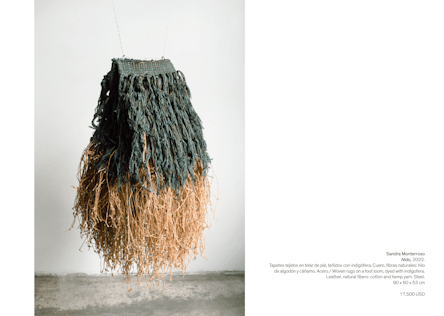
Sandra Monterroso’s work uses sophisticated strategies to point to historical moments of great tension. Using various languages such as performance or video, and various perspectives, Monterroso investigates and deepens ideas about personal, historical and colonial wounds. Her practice can be understood as an exercise of healing one’s own body and history or culture. Through her performative actions in which she includes sculpture, objects and installations, she projects her relationship with the sacred and how it manifests itself in a continuous mythical return, in contrast to the linearity proposed by a modern reading of reality. With a voice that resonates from her maternal lineage of Mayan Q’eq’chi culture, Sandra’s practice signals to the symbolic, spiritual, social and political aspects that constantly alter contemporaneity. It is a timeless and polyphony discourse. Her reflections are directed towards an attempt to redefine her decolonized identity, for this reason her work makes a constant return to her geographical territory of origin, and she adopts and incorporates cultural elements of her ancestry through which she transforms her contemporary and contradictory condition.
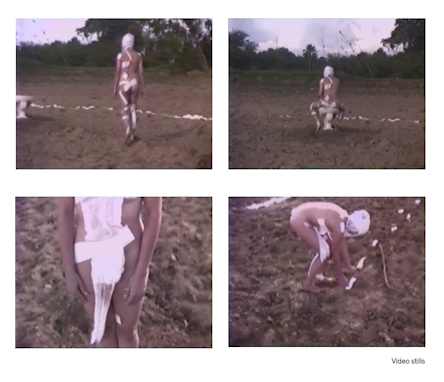
Maria Evelia Marmolejo (Pradera, Colombia 1958) one of the most radical performance artists to emerge in the 1980s in Latin America. The political and feminist performative work by Maria Evelia Marmolejo started in the late 1970s in Cali, Colombia. In her work, the woman’s body plays a powerful role in addressing sociopolitical issues, pertinent to Latin America and the world at large. Marmolejo’s work has been shown both inside and outside the art institution, often taking place in secluded locations away from the public view, others in public places with or without the authorities consent, and also in institutions such as Museum of Modern Art of Bogotá, Museum of Modern Art Cartagena, Contemporary Art Museum Guayaquil. Conferences include History of Contemporary Art in Latin America, Universidad Central of Quito and in the Contemporary Museum and Pinacoteca of Guayaquil, Ecuador; The History of Pre —Colombian Performance Art to present day, State Institute of Fine Arts of Cali, Colombia; Poisoning Pachamama, Plan Colombia, York College, New York; International Interests Behind Illicit Crops, York College, New York. Her work has been published through research projects such as Re. Act. Feminism, a performing archive based in Berlin, and articles in international publication such us Art Nexus and Arte y Critica. Marmolejo’s work will be on view in the context of the historical exhibition “The Political Body: Radical Women in Latin American Art: 1960-1985”, which is curated by Cecilia Fajardo.—Hill and Andrea Giunta. Maria Evelia Marmolejo is a New York based Colombian artist and holds a Master of Arts in Humanities from The City University of New York.
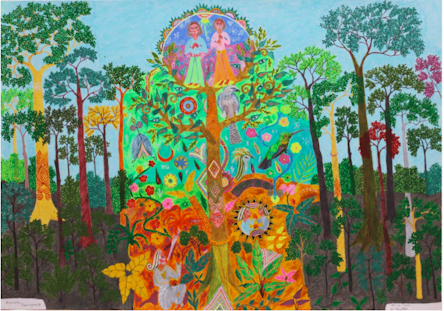
The work of Aycoobo is based on the teachings of his father, the artist Abel Rodríguez Muinane, of his experience in the Amazon and his particular worldview formed through mystical expertise during the use of medicinal and sacred plants. For Wilson Rodríguez, who has acquired his artistic knowledge in an empirical way, that is to say, through his daily experience, the relationship with nature is manifested in his work with the same force as the imagination and the mythical universe of his nation. Aycoobo’s drawings are, in many ways, representations of the relationships between the visible or physical world and the invisible world that is only revealed in the artist’s heart and from which he can, among other things, heal the body and the spirit itself, from others and from the community. To this extent, Rodriguez’s works are not only drawings, they are cosmic and polyphonic maps in which the artist tries to condense very old knowledge and contemporary thoughts. In this way, notions such as logic, sequence, concatenation are replaced by ideas that connect more with the poetic universe, such as revelation, synchrony, or intuition. Then, these drawings that start from the interest and need to portray the organic nature, tend to subvert the traditional patterns of representation and lead to hallucinogenic revelations that disclose the invisible architectures of reality. In a multiple order, the forms and contents of the work of Aycoobo, the figures, simple geometries and the lines, become powerful tools for an abstraction that does not derive from the conceptual exercise, but instead, from the ancestral wisdom

The work of Aycoobo is based on the teachings of his father, the artist Abel Rodríguez Muinane, of his experience in the Amazon and his particular worldview formed through mystical expertise during the use of medicinal and sacred plants. For Wilson Rodríguez, who has acquired his artistic knowledge in an empirical way, that is to say, through his daily experience, the relationship with nature is manifested in his work with the same force as the imagination and the mythical universe of his nation. Aycoobo’s drawings are, in many ways, representations of the relationships between the visible or physical world and the invisible world that is only revealed in the artist’s heart and from which he can, among other things, heal the body and the spirit itself, from others and from the community. To this extent, Rodriguez’s works are not only drawings, they are cosmic and polyphonic maps in which the artist tries to condense very old knowledge and contemporary thoughts. In this way, notions such as logic, sequence, concatenation are replaced by ideas that connect more with the poetic universe, such as revelation, synchrony, or intuition. Then, these drawings that start from the interest and need to portray the organic nature, tend to subvert the traditional patterns of representation and lead to hallucinogenic revelations that disclose the invisible architectures of reality. In a multiple order, the forms and contents of the work of Aycoobo, the figures, simple geometries and the lines, become powerful tools for an abstraction that does not derive from the conceptual exercise, but instead, from the ancestral wisdom

My work combines traditional textile practices with contemporary approaches to painting, sculpture and digital media. Through this combination I re-conceptualize the traditional distinction between the artistic and the artisanal, the so-called fine arts and traditional craft. This re-definition generates a creative space which allows me to explore temporality, memory, gender, and community. Working with traditional techniques and archaic materials has forced me to slow down the process and times of production. The suspended temporality of weaving and dyeing draws me away from the forces of contemporary consumer culture and from the modern cult of efficiency and speed, while at the same time allowing me to detect and reveal their all- pervading influence. Woven artifacts powerfully signal a tension between traditional relationships to material production and our contemporary lust for mass productivity, shocking stimuli, digital imaging, and speed. However, my resistance to the fast and mindless pacing of the digital- virtual world is not nostalgic or obsolete. I also rework and represent woven objects in digital media, video and photography, thus introducing them into a world from which they are alienated. By oscillating between different media and genres, and between the fast and the slow, the contemplative and the active, I explore the material and contextual constraints of several particular media. Hand-woven textiles are imbued with distinct historical significance. In the Mesoamerican traditions, textiles are used as vessels for memory and story telling. The very methods of teaching and passing weaving techniques from generation to generation are acts of memory and memorializing. Textiles are a visual language with an archaic relationship to materiality. But they can also express contemporary individual and communal identities, bridging generations and communities from the past and the present.
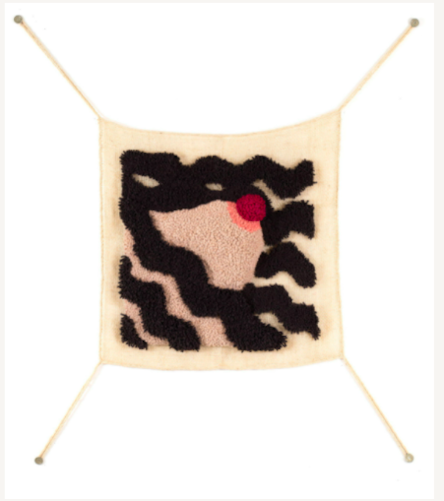
My work combines traditional textile practices with contemporary approaches to painting, sculpture and digital media. Through this combination I re-conceptualize the traditional distinction between the artistic and the artisanal, the so-called fine arts and traditional craft. This re-definition generates a creative space which allows me to explore temporality, memory, gender, and community. Working with traditional techniques and archaic materials has forced me to slow down the process and times of production. The suspended temporality of weaving and dyeing draws me away from the forces of contemporary consumer culture and from the modern cult of efficiency and speed, while at the same time allowing me to detect and reveal their all- pervading influence. Woven artifacts powerfully signal a tension between traditional relationships to material production and our contemporary lust for mass productivity, shocking stimuli, digital imaging, and speed. However, my resistance to the fast and mindless pacing of the digital- virtual world is not nostalgic or obsolete. I also rework and represent woven objects in digital media, video and photography, thus introducing them into a world from which they are alienated. By oscillating between different media and genres, and between the fast and the slow, the contemplative and the active, I explore the material and contextual constraints of several particular media. Hand-woven textiles are imbued with distinct historical significance. In the Mesoamerican traditions, textiles are used as vessels for memory and story telling. The very methods of teaching and passing weaving techniques from generation to generation are acts of memory and memorializing. Textiles are a visual language with an archaic relationship to materiality. But they can also express contemporary individual and communal identities, bridging generations and communities from the past and the present.

My work combines traditional textile practices with contemporary approaches to painting, sculpture and digital media. Through this combination I re-conceptualize the traditional distinction between the artistic and the artisanal, the so-called fine arts and traditional craft. This re-definition generates a creative space which allows me to explore temporality, memory, gender, and community. Working with traditional techniques and archaic materials has forced me to slow down the process and times of production. The suspended temporality of weaving and dyeing draws me away from the forces of contemporary consumer culture and from the modern cult of efficiency and speed, while at the same time allowing me to detect and reveal their all- pervading influence. Woven artifacts powerfully signal a tension between traditional relationships to material production and our contemporary lust for mass productivity, shocking stimuli, digital imaging, and speed. However, my resistance to the fast and mindless pacing of the digital- virtual world is not nostalgic or obsolete. I also rework and represent woven objects in digital media, video and photography, thus introducing them into a world from which they are alienated. By oscillating between different media and genres, and between the fast and the slow, the contemplative and the active, I explore the material and contextual constraints of several particular media. Hand-woven textiles are imbued with distinct historical significance. In the Mesoamerican traditions, textiles are used as vessels for memory and story telling. The very methods of teaching and passing weaving techniques from generation to generation are acts of memory and memorializing. Textiles are a visual language with an archaic relationship to materiality. But they can also express contemporary individual and communal identities, bridging generations and communities from the past and the present.

Maria Evelia Marmolejo (Pradera, Colombia 1958) one of the most radical performance artists to emerge in the 1980s in Latin America. The political and feminist performative work by Maria Evelia Marmolejo started in the late 1970s in Cali, Colombia. In her work, the woman’s body plays a powerful role in addressing sociopolitical issues, pertinent to Latin America and the world at large. Marmolejo’s work has been shown both inside and outside the art institution, often taking place in secluded locations away from the public view, others in public places with or without the authorities consent, and also in institutions such as Museum of Modern Art of Bogotá, Museum of Modern Art Cartagena, Contemporary Art Museum Guayaquil. Conferences include History of Contemporary Art in Latin America, Universidad Central of Quito and in the Contemporary Museum and Pinacoteca of Guayaquil, Ecuador; The History of Pre —Colombian Performance Art to present day, State Institute of Fine Arts of Cali, Colombia; Poisoning Pachamama, Plan Colombia, York College, New York; International Interests Behind Illicit Crops, York College, New York. Her work has been published through research projects such as Re. Act. Feminism, a performing archive based in Berlin, and articles in international publication such us Art Nexus and Arte y Critica. Marmolejo’s work will be on view in the context of the historical exhibition “The Political Body: Radical Women in Latin American Art: 1960-1985”, which is curated by Cecilia Fajardo.—Hill and Andrea Giunta. Maria Evelia Marmolejo is a New York based Colombian artist and holds a Master of Arts in Humanities from The City University of New York.
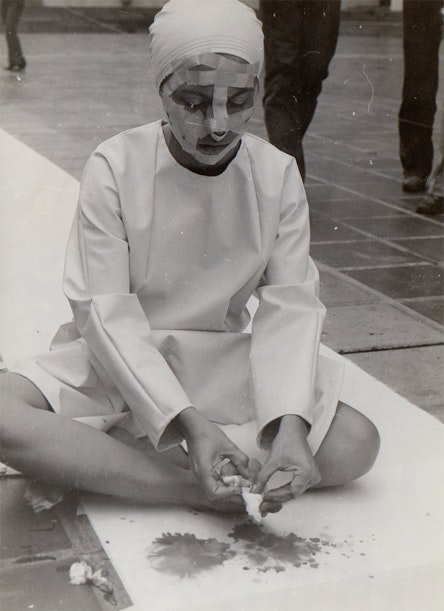
Maria Evelia Marmolejo (Pradera, Colombia 1958) one of the most radical performance artists to emerge in the 1980s in Latin America. The political and feminist performative work by Maria Evelia Marmolejo started in the late 1970s in Cali, Colombia. In her work, the woman’s body plays a powerful role in addressing sociopolitical issues, pertinent to Latin America and the world at large. Marmolejo’s work has been shown both inside and outside the art institution, often taking place in secluded locations away from the public view, others in public places with or without the authorities consent, and also in institutions such as Museum of Modern Art of Bogotá, Museum of Modern Art Cartagena, Contemporary Art Museum Guayaquil. Conferences include History of Contemporary Art in Latin America, Universidad Central of Quito and in the Contemporary Museum and Pinacoteca of Guayaquil, Ecuador; The History of Pre —Colombian Performance Art to present day, State Institute of Fine Arts of Cali, Colombia; Poisoning Pachamama, Plan Colombia, York College, New York; International Interests Behind Illicit Crops, York College, New York. Her work has been published through research projects such as Re. Act. Feminism, a performing archive based in Berlin, and articles in international publication such us Art Nexus and Arte y Critica. Marmolejo’s work will be on view in the context of the historical exhibition “The Political Body: Radical Women in Latin American Art: 1960-1985”, which is curated by Cecilia Fajardo.—Hill and Andrea Giunta. Maria Evelia Marmolejo is a New York based Colombian artist and holds a Master of Arts in Humanities from The City University of New York.

Sandra Monterroso’s work uses sophisticated strategies to point to historical moments of great tension. Using various languages such as performance or video, and various perspectives, Monterroso investigates and deepens ideas about personal, historical and colonial wounds. Her practice can be understood as an exercise of healing one’s own body and history or culture. Through her performative actions in which she includes sculpture, objects and installations, she projects her relationship with the sacred and how it manifests itself in a continuous mythical return, in contrast to the linearity proposed by a modern reading of reality. With a voice that resonates from her maternal lineage of Mayan Q’eq’chi culture, Sandra’s practice signals to the symbolic, spiritual, social and political aspects that constantly alter contemporaneity. It is a timeless and polyphony discourse. Her reflections are directed towards an attempt to redefine her decolonized identity, for this reason her work makes a constant return to her geographical territory of origin, and she adopts and incorporates cultural elements of her ancestry through which she transforms her contemporary and contradictory condition.
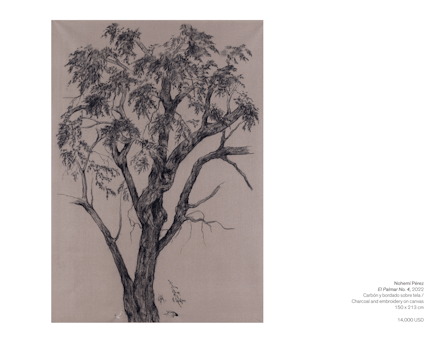
The work of Nohemí Pérez, multidisciplinary, revolves around the relationship between men and nature; the conflicts, tensions and genesis that arise from this constant friction. Based on the notions of architecture, cinema and sociology, the artist proposes a rereading of the Catatumbo territory; a geographical region with a very particular natural and sociocultural ecosystem. From the conquest until today, Catatumbo is the scene of multiple conflicts that have been transformed to compose a complex plot of anachronistic situations characteristic of Latin American contemporaneity. Illegal armed groups of right, left, native tribes, evangelical missionaries and large multinationals of mining and drug trafficking coexist in this jungle region. Nohemí mainly uses charcoal in her work as a reference to mining; Another recurring element is charcoal, with which she aims to make visible the exploitation of natural resources and at the same time the violence that this triggers. From the territory of her memory and her affections, Nohemí Pérez reconstructs the history of her origin and thus, collects the voices of those who live and have lived the Catatumbo from the close emotional ties of their experience. A particular interest in Nohemí’s work is to draw new symbolic and geographical maps that correspond to the various realities of the Catatumbo to allow it to appear on the scene of reconstruction and peace.
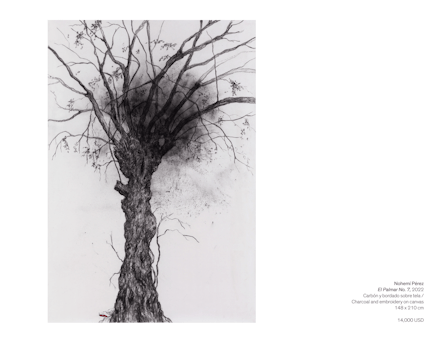
The work of Nohemí Pérez, multidisciplinary, revolves around the relationship between men and nature; the conflicts, tensions and genesis that arise from this constant friction. Based on the notions of architecture, cinema and sociology, the artist proposes a rereading of the Catatumbo territory; a geographical region with a very particular natural and sociocultural ecosystem. From the conquest until today, Catatumbo is the scene of multiple conflicts that have been transformed to compose a complex plot of anachronistic situations characteristic of Latin American contemporaneity. Illegal armed groups of right, left, native tribes, evangelical missionaries and large multinationals of mining and drug trafficking coexist in this jungle region. Nohemí mainly uses charcoal in her work as a reference to mining; Another recurring element is charcoal, with which she aims to make visible the exploitation of natural resources and at the same time the violence that this triggers. From the territory of her memory and her affections, Nohemí Pérez reconstructs the history of her origin and thus, collects the voices of those who live and have lived the Catatumbo from the close emotional ties of their experience. A particular interest in Nohemí’s work is to draw new symbolic and geographical maps that correspond to the various realities of the Catatumbo to allow it to appear on the scene of reconstruction and peace.
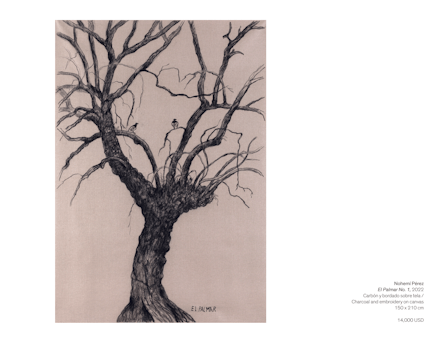
The work of Nohemí Pérez, multidisciplinary, revolves around the relationship between men and nature; the conflicts, tensions and genesis that arise from this constant friction. Based on the notions of architecture, cinema and sociology, the artist proposes a rereading of the Catatumbo territory; a geographical region with a very particular natural and sociocultural ecosystem. From the conquest until today, Catatumbo is the scene of multiple conflicts that have been transformed to compose a complex plot of anachronistic situations characteristic of Latin American contemporaneity. Illegal armed groups of right, left, native tribes, evangelical missionaries and large multinationals of mining and drug trafficking coexist in this jungle region. Nohemí mainly uses charcoal in her work as a reference to mining; Another recurring element is charcoal, with which she aims to make visible the exploitation of natural resources and at the same time the violence that this triggers. From the territory of her memory and her affections, Nohemí Pérez reconstructs the history of her origin and thus, collects the voices of those who live and have lived the Catatumbo from the close emotional ties of their experience. A particular interest in Nohemí’s work is to draw new symbolic and geographical maps that correspond to the various realities of the Catatumbo to allow it to appear on the scene of reconstruction and peace.

Modou Dieng Yacine is a contemporary African visual artist based in Chicago, Illinois. Dieng Yacine has spent the last 20 years between the United States and his native city of Dakar, Senegal. In his mixed media works, he combines painting and photography to create a dualistic positioning where both mediums are engaged and activated by one another. In doing so, he provokes what he calls “imaginative lines and multiplicities of layers which can be continuously applied to the surface”. For Dieng Yacine the imagination of the painting itself often dictates the medium used in the work. Frequently incorporating materials such as denim, burlap, cardboard and wood frames, he is affirming both his African Identity and the contemporary lifestyle he finds himself in, a reality where consumerism meets pop culture. In building his distinct color palette, Dieng Yacine is selecting from the tones and shades of the Sub-Saharan desert dust, adjusted and layered with the shifting seasonal coloration of the American Midwest. His geometry and forms are derived and influenced by his study and love for Bauhaus principles, architecture, and design. He is creating a spatial implementation of emotional gestures and intellectual decisions on the surface, where the chaos of urban African architecture is confronted with a postcolonial discourse. The frame becomes form and the canvas is pushed to the background as an amputated muted witness. Dieng Yacine’s work dwells on notions of asymmetrical parallelism [le parallelisme asymetrique], a term invented by African poet and philosopher Léopold Sédar Senghor, defined as a diversified repetition of rhythm in time and space. Dieng Yacine uses these notions to add pattern and flow to his geometric compositions, constructing his own Bauhaus African.
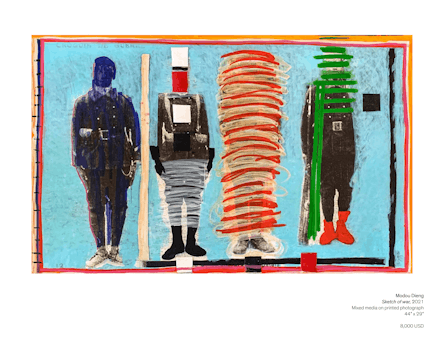
Modou Dieng Yacine is a contemporary African visual artist based in Chicago, Illinois. Dieng Yacine has spent the last 20 years between the United States and his native city of Dakar, Senegal. In his mixed media works, he combines painting and photography to create a dualistic positioning where both mediums are engaged and activated by one another. In doing so, he provokes what he calls “imaginative lines and multiplicities of layers which can be continuously applied to the surface”. For Dieng Yacine the imagination of the painting itself often dictates the medium used in the work. Frequently incorporating materials such as denim, burlap, cardboard and wood frames, he is affirming both his African Identity and the contemporary lifestyle he finds himself in, a reality where consumerism meets pop culture. In building his distinct color palette, Dieng Yacine is selecting from the tones and shades of the Sub-Saharan desert dust, adjusted and layered with the shifting seasonal coloration of the American Midwest. His geometry and forms are derived and influenced by his study and love for Bauhaus principles, architecture, and design. He is creating a spatial implementation of emotional gestures and intellectual decisions on the surface, where the chaos of urban African architecture is confronted with a postcolonial discourse. The frame becomes form and the canvas is pushed to the background as an amputated muted witness. Dieng Yacine’s work dwells on notions of asymmetrical parallelism [le parallelisme asymetrique], a term invented by African poet and philosopher Léopold Sédar Senghor, defined as a diversified repetition of rhythm in time and space. Dieng Yacine uses these notions to add pattern and flow to his geometric compositions, constructing his own Bauhaus African.
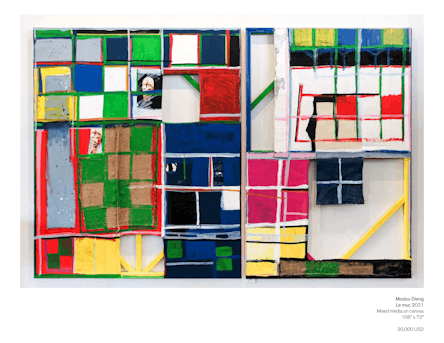
Modou Dieng Yacine is a contemporary African visual artist based in Chicago, Illinois. Dieng Yacine has spent the last 20 years between the United States and his native city of Dakar, Senegal. In his mixed media works, he combines painting and photography to create a dualistic positioning where both mediums are engaged and activated by one another. In doing so, he provokes what he calls “imaginative lines and multiplicities of layers which can be continuously applied to the surface”. For Dieng Yacine the imagination of the painting itself often dictates the medium used in the work. Frequently incorporating materials such as denim, burlap, cardboard and wood frames, he is affirming both his African Identity and the contemporary lifestyle he finds himself in, a reality where consumerism meets pop culture. In building his distinct color palette, Dieng Yacine is selecting from the tones and shades of the Sub-Saharan desert dust, adjusted and layered with the shifting seasonal coloration of the American Midwest. His geometry and forms are derived and influenced by his study and love for Bauhaus principles, architecture, and design. He is creating a spatial implementation of emotional gestures and intellectual decisions on the surface, where the chaos of urban African architecture is confronted with a postcolonial discourse. The frame becomes form and the canvas is pushed to the background as an amputated muted witness. Dieng Yacine’s work dwells on notions of asymmetrical parallelism [le parallelisme asymetrique], a term invented by African poet and philosopher Léopold Sédar Senghor, defined as a diversified repetition of rhythm in time and space. Dieng Yacine uses these notions to add pattern and flow to his geometric compositions, constructing his own Bauhaus African.
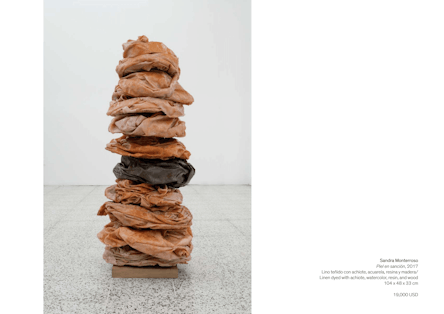
Sandra Monterroso’s work uses sophisticated strategies to point to historical moments of great tension. Using various languages such as performance or video, and various perspectives, Monterroso investigates and deepens ideas about personal, historical and colonial wounds. Her practice can be understood as an exercise of healing one’s own body and history or culture. Through her performative actions in which she includes sculpture, objects and installations, she projects her relationship with the sacred and how it manifests itself in a continuous mythical return, in contrast to the linearity proposed by a modern reading of reality. With a voice that resonates from her maternal lineage of Mayan Q’eq’chi culture, Sandra’s practice signals to the symbolic, spiritual, social and political aspects that constantly alter contemporaneity. It is a timeless and polyphony discourse. Her reflections are directed towards an attempt to redefine her decolonized identity, for this reason her work makes a constant return to her geographical territory of origin, and she adopts and incorporates cultural elements of her ancestry through which she transforms her contemporary and contradictory condition.
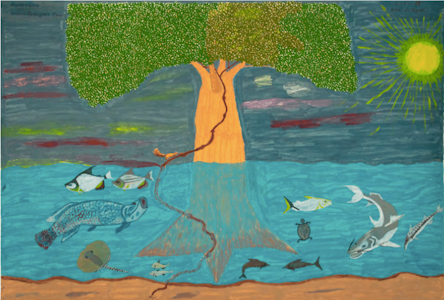
The work of Aycoobo is based on the teachings of his father, the artist Abel Rodríguez Muinane, of his experience in the Amazon and his particular worldview formed through mystical expertise during the use of medicinal and sacred plants. For Wilson Rodríguez, who has acquired his artistic knowledge in an empirical way, that is to say, through his daily experience, the relationship with nature is manifested in his work with the same force as the imagination and the mythical universe of his nation. Aycoobo’s drawings are, in many ways, representations of the relationships between the visible or physical world and the invisible world that is only revealed in the artist’s heart and from which he can, among other things, heal the body and the spirit itself, from others and from the community. To this extent, Rodriguez’s works are not only drawings, they are cosmic and polyphonic maps in which the artist tries to condense very old knowledge and contemporary thoughts. In this way, notions such as logic, sequence, concatenation are replaced by ideas that connect more with the poetic universe, such as revelation, synchrony, or intuition. Then, these drawings that start from the interest and need to portray the organic nature, tend to subvert the traditional patterns of representation and lead to hallucinogenic revelations that disclose the invisible architectures of reality. In a multiple order, the forms and contents of the work of Aycoobo, the figures, simple geometries and the lines, become powerful tools for an abstraction that does not derive from the conceptual exercise, but instead, from the ancestral wisdom